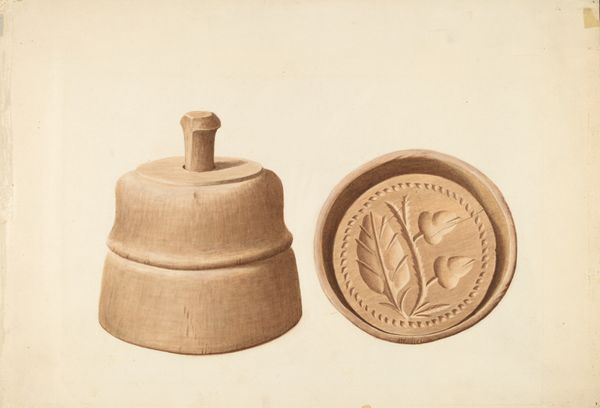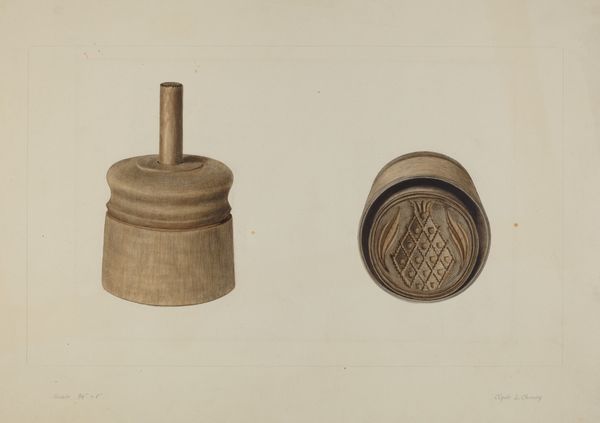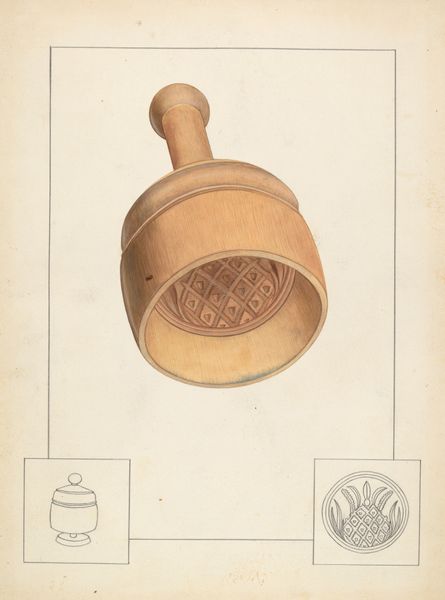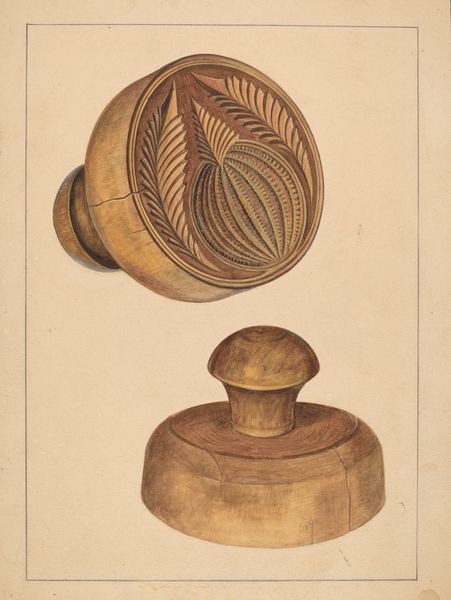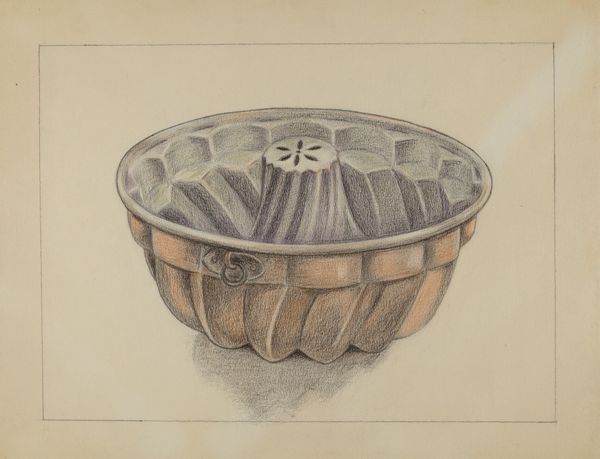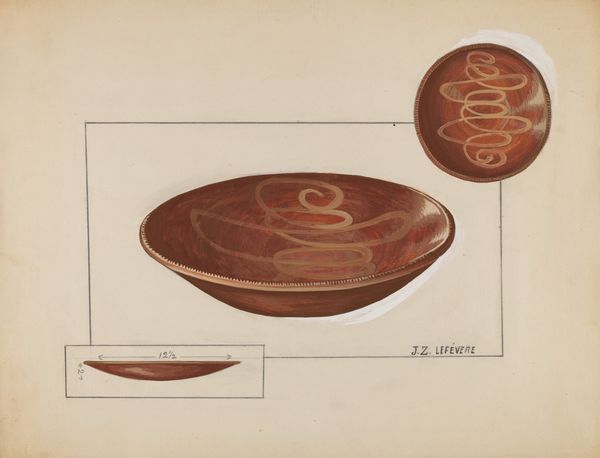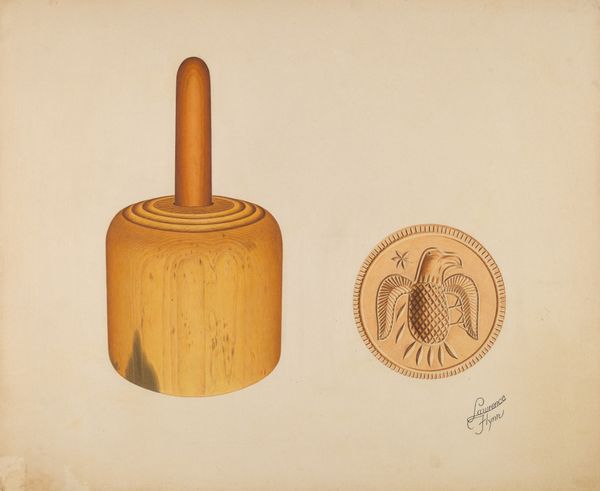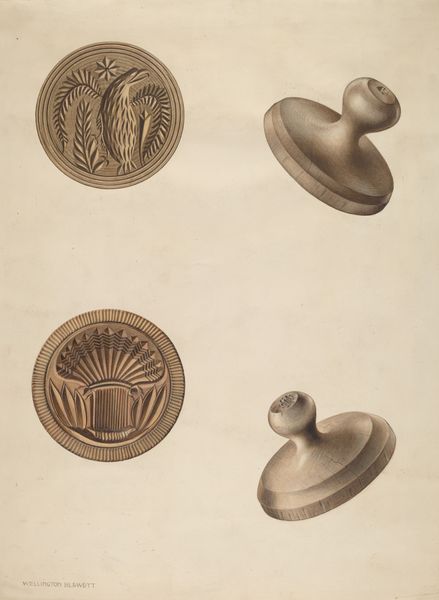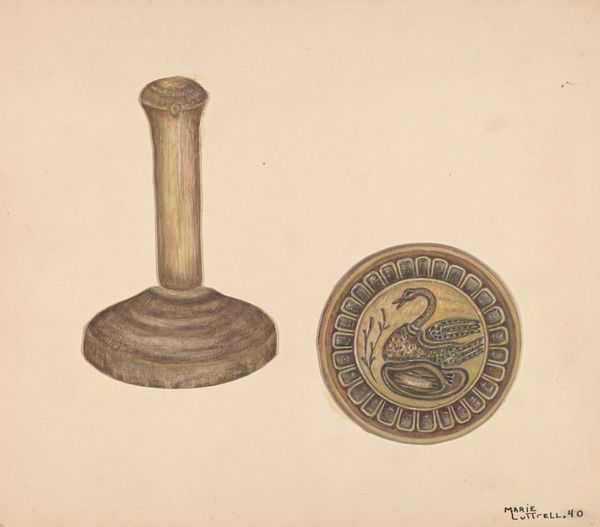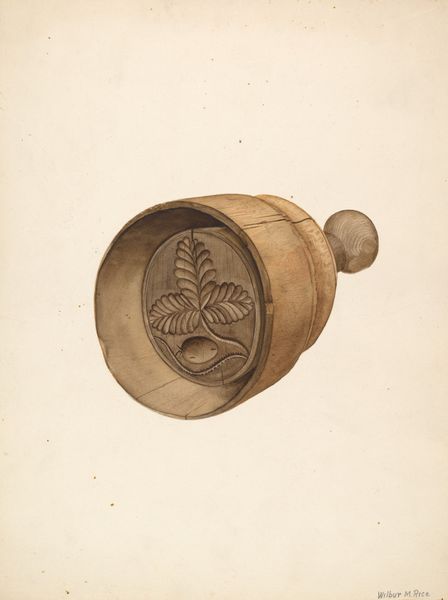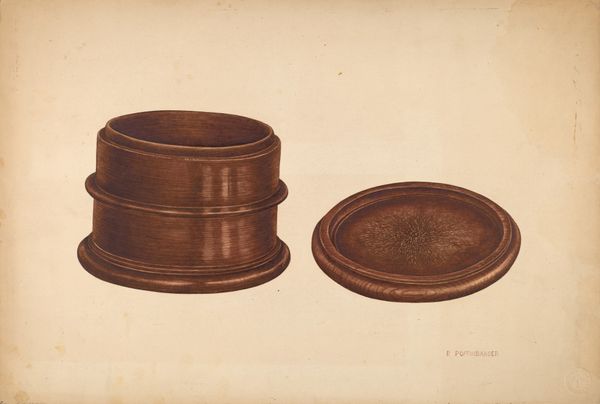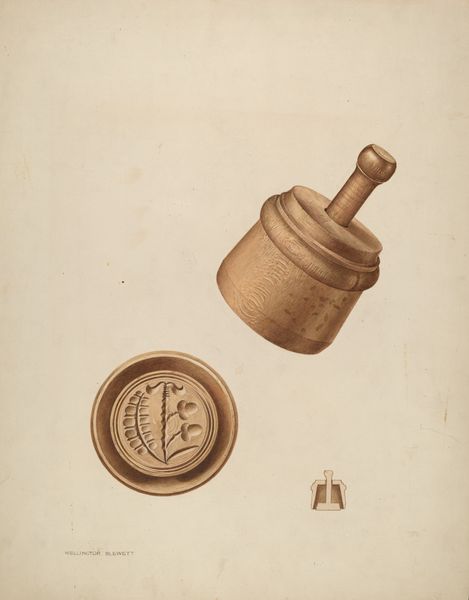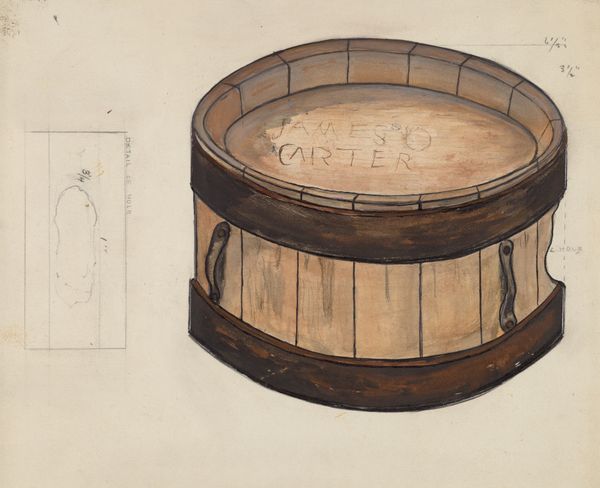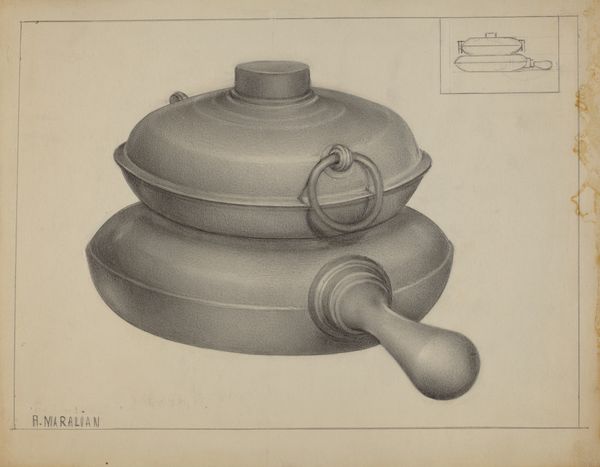
drawing, paper, pencil
#
drawing
#
paper
#
pencil
#
realism
Dimensions: overall: 26.6 x 35.5 cm (10 1/2 x 14 in.) Original IAD Object: 7" high; 4" in diameter
Copyright: National Gallery of Art: CC0 1.0
Curator: Look at this delightful study – "Butter Mold - Burr Design," created around 1937 by Lawrence Flynn. The simplicity, the elegance of it! Editor: Immediately, I'm struck by how much work is condensed in here. The intricacy of that floral carving on the mold contrasts so sharply with the tool’s utilitarian function, but the labor, both in reality and representation, isn't really disguised. Curator: Exactly! It's almost like a quiet ode to domestic creativity, isn’t it? It's just a pencil drawing, probably on paper, yet Flynn captures every detail. The texture of the wood, the gentle curves… it's like he's imbuing the mold with a certain personality, and its relation to food as pleasure and labour. Editor: Precisely. What’s interesting to me is the hidden-in-plain-sight element: an artisan, in their home maybe, taking up some craft to produce or enable new creations, which simultaneously reflects economic forces beyond its walls. We are so removed from hand making our dairy nowadays, but it’s fascinating how a simple kitchen utensil embeds narratives about our material needs. Curator: And that tension you're getting at is precisely the push-and-pull within folk art, between practical use and aesthetic beauty. The "burr" design isn't just decoration; it tells a story. There's something innately human about wanting to elevate even the most mundane object. What story might we imprint upon a butter mold in our own time? Editor: Oh, without a doubt it speaks to deeper traditions than we expect. And seeing this so delicately rendered, that level of precision for what must have been such a mass-produced object... well, it almost transforms the mold, doesn't it? Beyond functionality, beyond folk craft, and perhaps just hints at an enduring sense of artistry and invention tied to food. Curator: Yes, in many ways it encourages us to slow down, doesn't it? It forces a renewed interest, an encounter, a sense of tactility even! And ultimately to think about where things come from, and why. Editor: Exactly, the mold imprints an identity on something, like the mark of a laborer upon their product, only now also on its resulting form: the consumer good itself. Very potent commentary by way of a mold drawing from Mr. Flynn, isn't it?
Comments
No comments
Be the first to comment and join the conversation on the ultimate creative platform.
